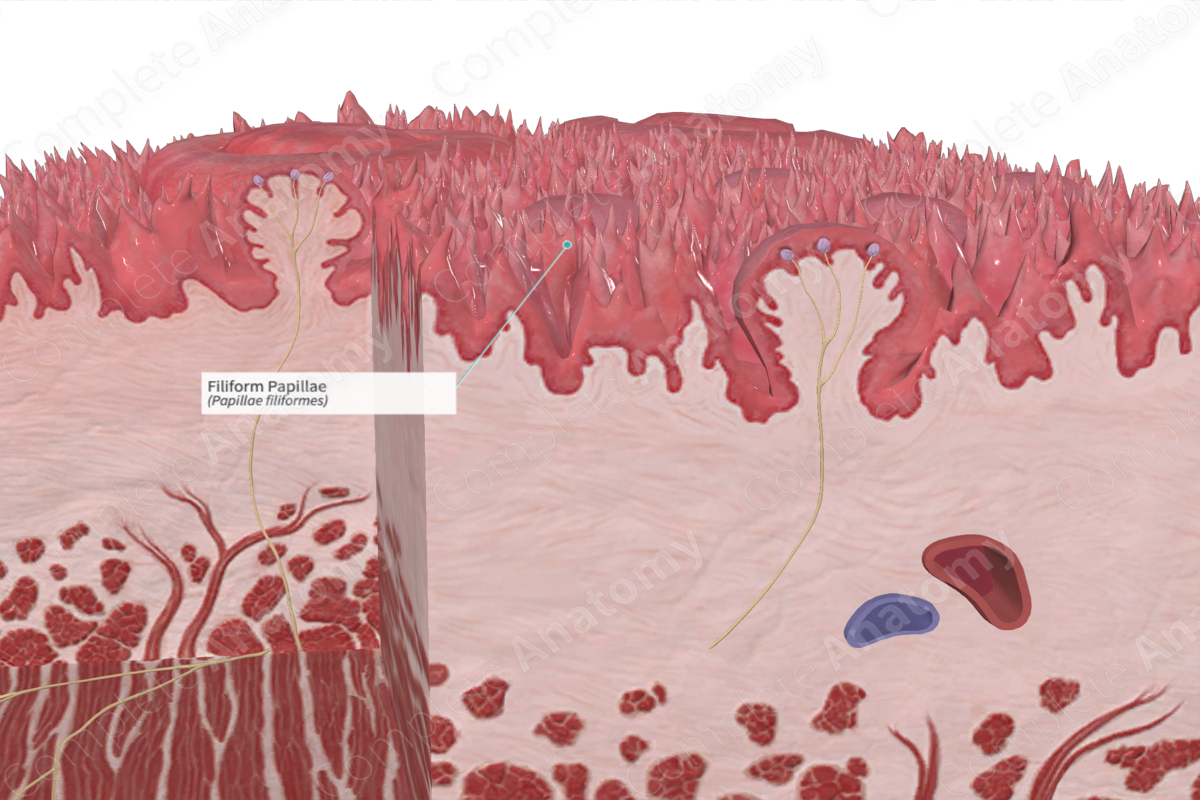
Quick Facts
The filiform papillae are the threadlike elevations that cover most of the tongue surface (Dorland, 2011).
Related parts of the anatomy
Structure and/or Key Features
The filiform papillae are widely distributed along the entire dorsal surface of the tongue. They are threadlike (filum) and usually have peaked or pointed tips, which are more rounded in the anterior regions of the tongue. They are composed of connective tissue cores which are columnar in shape with a central upper depression. These have hair-like protrusions emanating from it, with varying quantity and thickness based on location of papillae (Kobayashi et al., 1994).
The filiform papillae are unique in terms of the lingual papillae as they predominantly have a keratinized stratified squamous epithelium and are the only papillae without taste buds, so they do not participate in gustation. Their role is focused on mastication due to their large population and friction-generating ability.
Function
The filiform papillae increase the total surface area of the tongue and, thus, the total contact area between the food particles and the tongue.
References
Dorland, W. (2011) Dorland's Illustrated Medical Dictionary. 32nd edn. Philadelphia, USA: Elsevier Saunders.
Kobayashi, K., Kumakura, M., Shinkai, H. & Ishii, K. (1994) Three-dimensional fine structure of the lingual papillae and their connective tissue cores in the human tongue. Kaibogaku Zasshi, 69(5), 624-35.
